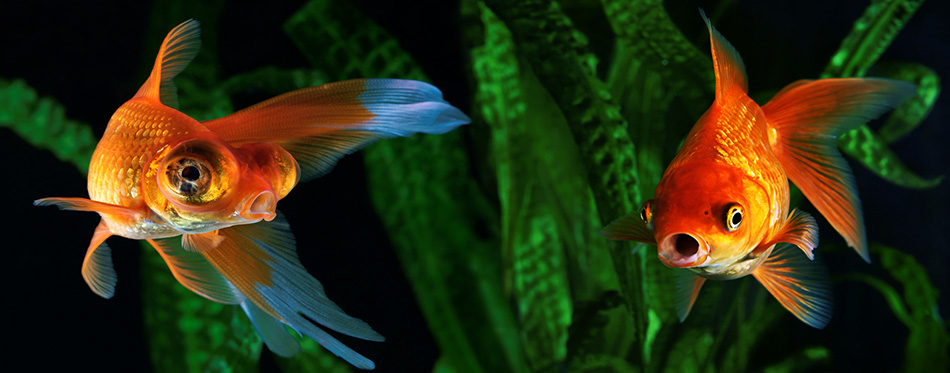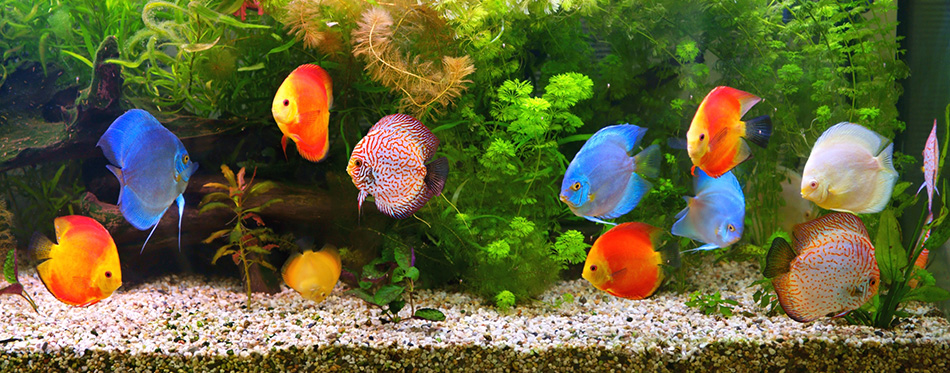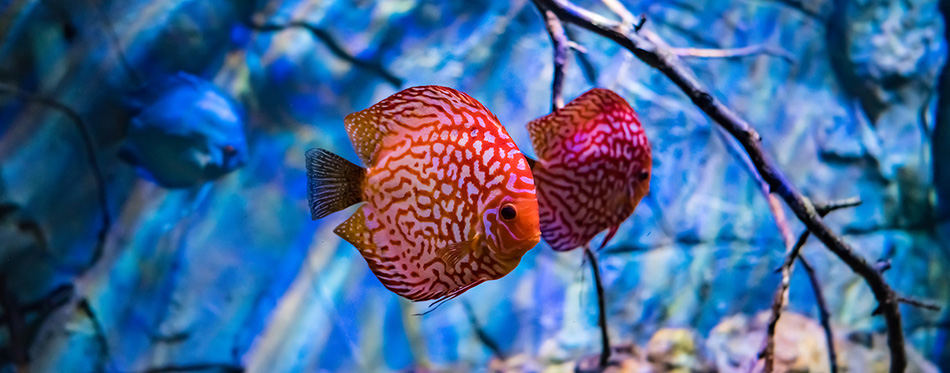Every living organism needs oxygen to survive, be it a plant, a cat or a fish. However, we all have completely different ways of getting it. How that works exactly is one of the wonders of nature and one of the few things about fish that many people think about. Breathing in animals means taking in oxygen and releasing carbon dioxide. The animals on land use the oxygen from the air, the fish use the oxygen, which is dissolved in the water. The oxygen that fish use is already present in the water and because they have lungs instead of gills, they can access it easily. However, there’s so much more to the whole process and if you’re curious to know more, here is everything you need to know about how fish breathe.

Fish and Other Aquatic Animals Use Gills
Fishes are not equipped with a set of lungs like humans are; so, for their specific breathing needs, they have gills instead as opposed to the noses most mammals have. Their blood flows through their gills in the opposite direction of the water. If the opposite was the case, then fish would not be able to any oxygen from it. In a nutshell, gills act like a filter, they collect the oxygen from the water and supply it to fish. Once the oxygen has been collected, it is transported throughout the bloodstream and in turn, fuels their body. So, there’s a reason why the saying ‘like a fish out of water’ means that something is out of place. Fish need water to remain healthy and more importantly, to stay alive.
Gills Are Not Just for Breathing
Gills may be a respiratory organ, but they do not only oversee gaseous exchanges in aquatic animals. They also play a big part in how most fishes catch and eat their food. When they open their mouths, water flows in and once it flows over the gills, its rackers filter out the plankton then retain it in the mouth. Only at that point, can it be ingested as food. The gills also oversee the transfer of ions, water, carbon dioxide, ammonia, and acids. These multi-purpose organs are vital to the survival of fish altogether.
Opening Their Mouths Is Part of the Breathing Process
Fishes constantly open their mouths and there is a pretty important reason behind it. It is a vital part of their respiratory process and this is why. When fish open their mouth, water flows in which is then passed over their gills; that way, the filaments and rightly packed blood capillaries located on them absorb the dissolved oxygen. Once this happens, they send out carbon dioxide in exchange. It should be noted that carbon dioxide itself is a by-product of the metabolism. Due to the fact that it can easily diffuse into the blood that is passing by, it can also be quickly picked up to be further inserted through the walls of the gill.
Some Fish Can Breathe Outside Water
Fish generally need to stay in the water to survive, but some of them can achieve this for a limited period of time. Certain species like lungfish have the ability to live outside water for a couple of years or more. How it achieves this is by secreting a mucus cocoon, and then it proceeds to burrow itself under some unbaked earth. This fish basically takes in air with its lungs through what is a built-in breathing tube that leads to the surface. The fact that they are also equipped with a pair of lungs makes the whole process a whole lot easier. Lungfish are the only species of fish that have both a set of gills and lungs, others only have one of each. Based on this fact, scientists theorize that studying lungfish can help tell the story of creatures who left the sea to become land dwellers. A fun fact is that the Australian lungfish are well known for their longevity. The oldest one is reported to have lived for a whopping 100 years.
Related Post: Aquarium Heaters

Fish Can Drown In Water
Drowning seems as implausible as can be, especially since fish actually live in water and they are impeccable swimmers. Nevertheless, it is very possible for them to drown in water and this is the reason why. Oxygen is naturally present in water and this is perfect because fish need it to survive as much as any land mammals. As they breathe, fish also expel carbon dioxide just like humans do. The only difference is that while humans have access to the open air, fish are limited to the confines of water. As a result, oxygen levels deplete over time and when this happens, fish are most likely to suffocate and drown. There is good news as new oxygen can be reintroduced into the water. This usually takes place at the surface where water meets air. Aquarists have been known to artificially introduce oxygen into the water by using an air pump.
Chewing Could Kill Them
For humans, chewing food is vital to the process of eating altogether, but the same cannot be said for our aquatic friends. The truth of the matter is that fish would definitely suffocate if they tried to chew their food. This is because the process of chewing would drastically interfere with water passing over their gills. So, what about carnivorous fish? Nope, they still do not chew their food either. Rather, they use their teeth to catch and trap their food while working on swallowing it chunks. Bottom dwellers have said teeth present in their throats rather than their mouths, so the chewing/grinding does not occur the same way it does in humans.
A Swim Bladder?
The gills are well known respiratory organs in fish, but most fish are also equipped with something called a ‘swim bladder’. This organ is located inside the body cavity, just below the kidney and above the stomach and intestine. For some fish, the swim bladder acts just like a specialized lung – most fishes that carry this feature are air breathers to the point that staying in the water for an extended period of time without going to the surface could kill them; even if they have access to waters that are practically bubbling with oxygen.
Some fishes use this organ to create their overall depth while in the water by regulating the amount of gas present in the swim bladder. In almost all cases, the gas is oxygen and makes the fish more buoyant; there are some other fish that do this with oil instead of gas. Then, of course, there are some that have no use for the organ altogether. In a nutshell, that probably explains why it is not as well known as the gills.
Some Fish Can Extract Oxygen From the Air
It is no surprise that over the ages, select species of fish have developed the ability to extract oxygen from the air and they have learned to do this using a number of different mechanisms. First, some fish are equipped with the rare ability to absorb oxygen directly through their skin. Some others have developed breathing organs especially designed to enable breathing outside water. It is quite fascinating to ponder on the fact that fish may be able to evolve to the point that they no longer need the confines of a water body to survive.
On the other hand, it is unfortunate that fish have developed this ability to survive in oxygen-depleted waters as well as areas too murky to provide them with adequate oxygen flow. All in all, this ability has proved most useful to their overall survival.
Related Post: Protein Skimmers

Some Fish Cannot Breathe Underwater
Aquatic mammals such as whales and dolphins lack the ability to breathe underwater even though that is their natural habitat. This is simply because they lack the gills other sea creatures have. So instead, these sea mammals breathe through special nostrils known as blowholes which can be found at the top of their head. They breathe by exposing their heads to the outside air when under water. The blowhole is not always open, after each breath; rather, it is tightly shut thanks to the surrounded strong muscles. Thanks to this mechanism, water has no risk of seeping into a whale or dolphin’s lungs.
Blowholes are probably well known as an outlet through which a whale or dolphin sprays water out. The gist behind this is that these mammals breath out first before surfacing for air. This results in the spray of water that is expelled out of the hole; the forceful breathing out essentially clears away water that may have been resting on the top of the blowhole. Thanks to the muscles surrounding the blowhole, the spray does not come from their lungs, rather, it sits on top of their heads waiting to be blown out right before they inhale some much-needed oxygen.
Source:
- How Do Fish Breathe Underwater? – Wonderpolis

